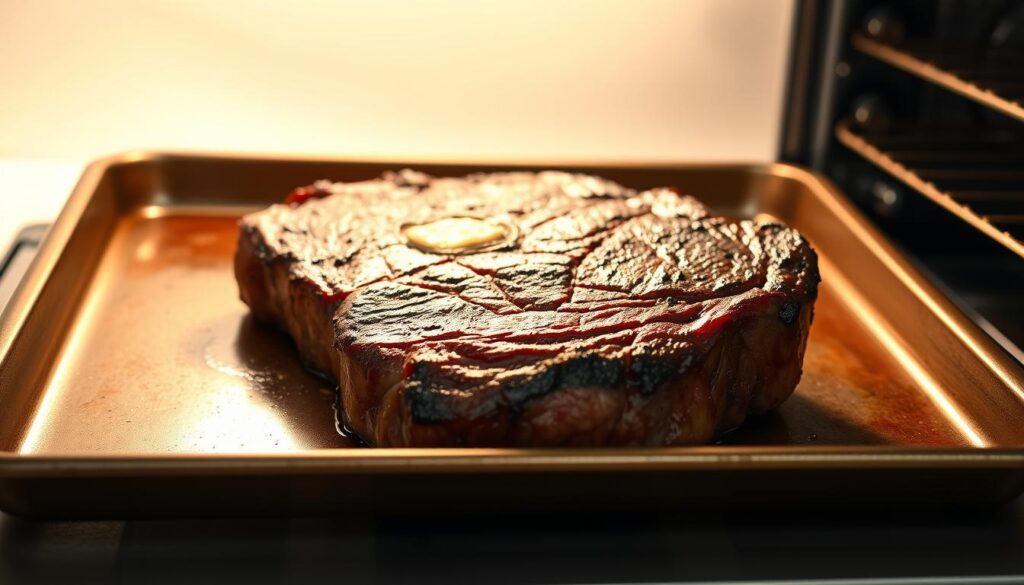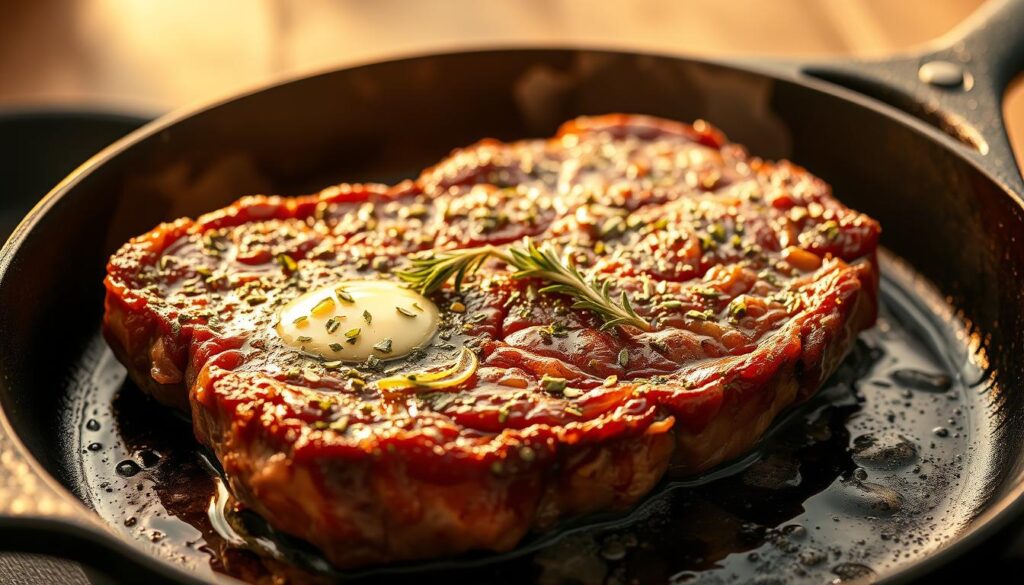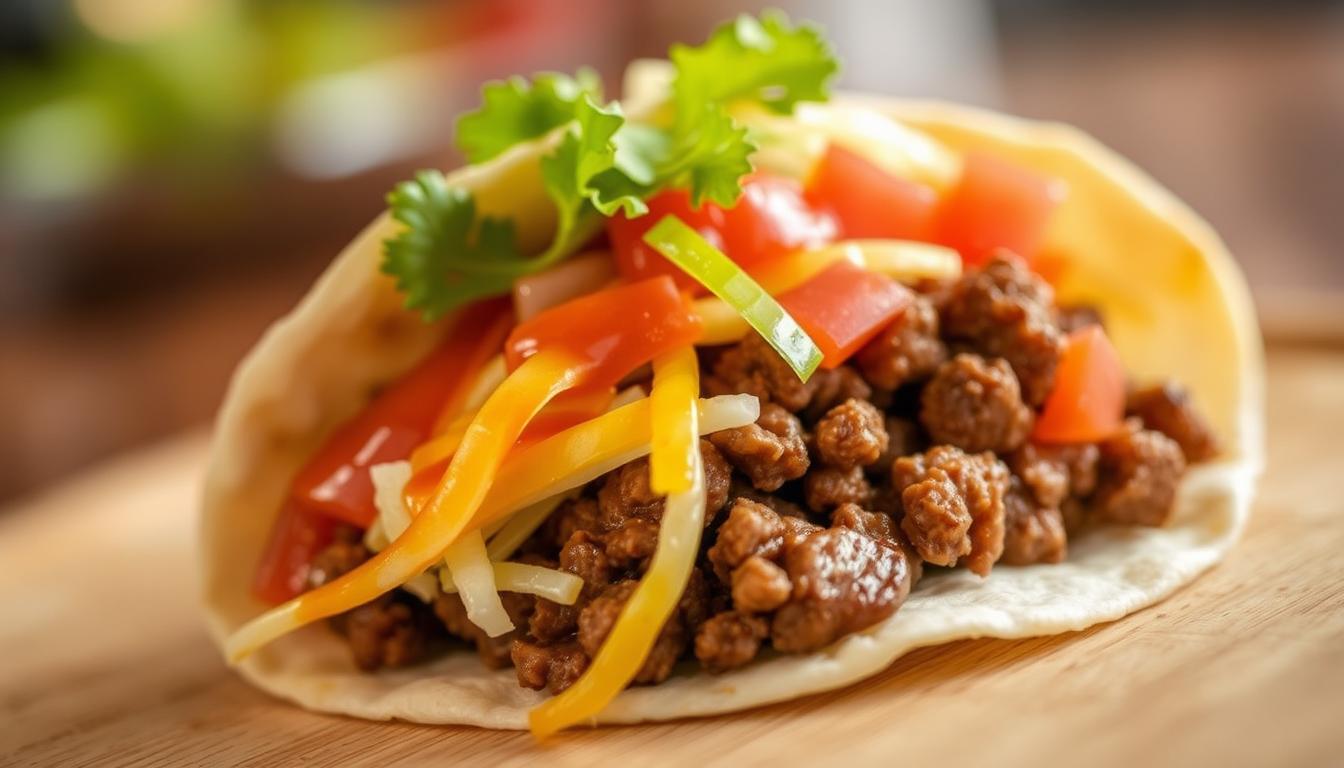Have you ever wondered how to achieve that perfect, restaurant-quality T-bone steak in the comfort of your own kitchen? The answer lies in a simple yet effective oven-based method that guarantees a flavorful crust and a juicy interior. Whether you’re a steak aficionado or a home cook looking to impress, this recipe is your gateway to a gourmet experience.
Starting with a high-quality, 2-inch-thick T-bone steak is essential. This cut, known for its generous portion of meat on both sides of the bone, offers a rich, beefy flavor. Preheating your oven to a scorching 450°F sets the stage for a perfectly seared crust. Searing the steak in a cast iron skillet with a drizzle of oil is the first step, locking in those savory flavors. A quick 2-3 minutes per side is all you need to achieve that golden-brown crust.
Transferring the skillet to the oven allows the steak to cook evenly, ensuring that every bite is as tender as the last. Using a meat thermometer is crucial to reach the ideal internal temperature for medium-rare—130°F to 135°F. Once cooked, letting the steak rest for 10 minutes allows the juices to redistribute, making each bite incredibly juicy and flavorful.
This method is designed for home cooks seeking restaurant-quality results without the hassle. By following these simple, proven steps, you’ll master the art of cooking a T-bone steak in the oven. Let’s dive into the details and make your next steak dinner unforgettable.
Key Takeaways
- Preheat your oven to 450°F for the perfect sear.
- Sear the steak in a cast iron skillet for 2-3 minutes per side.
- Cook in the oven until the internal temperature reaches 130°F-135°F for medium-rare.
- Let the steak rest for 10 minutes to redistribute juices.
- Use a meat thermometer for accurate doneness.
Getting Started: Choosing the Perfect Steak
Selecting the right steak is the cornerstone of a delicious meal. A high-quality cut ensures both flavor and juiciness, making it essential to choose wisely.
Understanding Cuts and Marbling
When it comes to steak, marbling is key. Those white flecks of fat dispersed throughout the meat enhance both flavor and texture, making the steak tender and juicy. A well-marbled steak will have a more robust taste and a softer texture compared to leaner cuts.
Comparing T-Bone, Ribeye, and New York Strip
The T-Bone steak is a showstopper, offering two steaks in one: the tenderloin and the strip steak. It’s perfect for those who want to experience both cuts in a single meal. On the other hand, the Ribeye is known for its rich marbling, making it incredibly flavorful and tender. The New York Strip, with its firm texture and less marbling, offers a slightly leaner option without sacrificing flavor.
For the best oven results, opt for a steak that’s at least 1.5 to 2 inches thick. This thickness ensures even cooking and prevents the steak from drying out. When visiting your butcher, ask for a USDA Prime or Choice cut, as these grades offer superior quality and marbling.
Seasoning is another crucial step. A generous sprinkle of kosher salt and your choice of seasonings, applied about 45 minutes before cooking, allows the meat to absorb the flavors fully. This preparation, combined with the right cut, sets the stage for a steak that’s nothing short of perfection.
Prepping Your Steak for Oven Perfection
Preparation is the unsung hero of a perfectly cooked steak. Taking the time to properly prepare your T-bone steak ensures a flavorful crust and a juicy interior. Let’s break down the essential steps to get your steak oven-ready.
Bringing Steak to Room Temperature
Allowing your steak to come to room temperature is a critical first step. This process, which takes about 30-40 minutes, ensures even cooking. A room-temperature steak sears better and cooks more uniformly, preventing the outside from burning before the inside reaches your desired doneness.
Seasoning with Salt, Pepper, and Herbs
Generously seasoning your steak is where the magic begins. Use coarse salt and freshly ground pepper to create a robust flavor profile. Add your favorite herbs for extra depth. Seasoning should be done about 45 minutes before cooking to allow the meat to absorb the flavors fully. This step is crucial for forming that perfect crust during searing.
Remember, the key is balance. While seasoning enhances flavor, it should never overpower the natural taste of the meat. These prep steps set the stage for a successful sear and a flawless oven finish, making your steak truly unforgettable.
Mastering the Art of Searing
Achieving a perfect sear is the first step to a restaurant-quality T-bone steak. This process locks in juices and creates a flavorful crust that enhances the overall dining experience.
Skillet and Cast Iron Techniques
A well-heated cast iron skillet is ideal for searing. Preheat it until it smokes slightly, then add a small amount of oil to prevent sticking. Place the steak in the skillet, searing for about 3-4 minutes per side. This high heat sears the steak quickly, forming a crust without overcooking the interior.
Creating a Flavorful Crust
The crust is where the magic happens. It’s developed through a process called the Maillard reaction—a chemical reaction between amino acids and reducing sugars when food is cooked. This reaction is what gives the steak its rich flavor and golden-brown color.

Use a meat thermometer to ensure the internal temperature reaches your desired doneness. For medium-rare, it should be between 130°F and 135°F. After searing, let the steak rest for 10 minutes to allow juices to redistribute, ensuring each bite is juicy and flavorful.
Cooking t bone steak in oven: The Easy Recipe
Cooking a T-bone steak in the oven is simpler than you think. With the right steps, you can achieve a juicy, flavorful result every time. Let’s walk through the process step by step.
Step-by-Step Oven Instructions
Start by preheating your oven to 500°F. While the oven heats up, season your steak generously with salt, pepper, and your favorite herbs. Let it sit at room temperature for about 30 minutes to ensure even cooking.
Heat a cast iron skillet over high heat and add a small amount of oil. Sear the steak for 3-4 minutes per side until a golden-brown crust forms. This step locks in the juices and flavors.
Transfer the skillet to the preheated oven and cook for 8-12 minutes, depending on your desired doneness. Use a meat thermometer to monitor the internal temperature. For medium-rare, aim for 130°F to 135°F.
Once cooked, remove the steak from the oven and let it rest for 10 minutes. This allows the juices to redistribute, making the steak even more tender and flavorful.
Monitoring Internal Temperature
A meat thermometer is your best tool for ensuring the steak is cooked to your liking. The internal temperature will rise slightly after resting, so remove the steak from the oven when it’s 5°F below your target temperature.
Remember, the thickness of the steak can affect cooking time. Adjust the oven time accordingly for thicker cuts. Always let the steak rest before slicing to preserve those delicious juices.

By following these easy steps, you can enjoy a perfectly cooked T-bone steak right at home. The key is to sear first, then finish in the oven, and always monitor the temperature for the best results.
Expert Tips for Enhanced Flavor and Juiciness
Elevate your steak game with these expert tips to ensure your T-bone steak is both flavorful and juicy. Whether you’re a novice or a seasoned cook, these techniques will help you achieve restaurant-quality results every time.
Using a Meat Thermometer for Doneness
A meat thermometer is your best friend when it comes to achieving the perfect doneness. For a medium-rare T-bone steak, aim for an internal temperature of 130°F to 135°F. Remember, the temperature will rise slightly after resting, so remove the steak from the oven when it’s about 5°F below your target temperature. This ensures a juicy, pink center every time.
Resting and Finishing Touches with Herb Butter
Once cooked, let your steak rest for 10 minutes. This allows the juices to redistribute, making each bite incredibly tender. Cover the steak loosely with foil to retain heat while it rests. For an extra burst of flavor, try finishing with a pat of herb butter. Mix softened butter with minced garlic, parsley, and a pinch of salt. Place the butter on top of the steak during the last few minutes of resting—it will melt beautifully, infusing the meat with rich, aromatic flavors.

These expert tips will transform your home-cooked steak into a steakhouse-quality masterpiece. With precise temperature control, proper resting, and a touch of herb butter, you’ll impress even the most discerning diners.
Alternative Methods and Specialty Options
While oven cooking is a popular method, exploring other techniques can add variety to your steak game. Let’s dive into some alternative approaches and ways to customize your dish.
Exploring Grilling, Reverse Sear, and Sous Vide
Grilling offers a smoky flavor and a nice char. Preheat your grill to medium-high heat and cook for 4-5 minutes per side for medium-rare. Reverse searing involves cooking the steak in the oven at a lower temperature (300°F) until it reaches 115°F, then searing it in a skillet for a crispy crust. Sous vide ensures even cooking by sealing the steak in a bag and setting the water bath to 130°F for 1-4 hours, depending on thickness.
Customizing with Pan Sauce and Additional Seasonings
Enhance your steak with a flavorful pan sauce. After cooking, add butter, shallots, and red wine to the skillet, simmering until reduced. For extra seasoning, try garlic-herb or spicy blends. These touches elevate your dish without overpowering the meat’s natural flavor.

Experimenting with these methods and customization ideas can help you achieve a gourmet steak experience at home, keeping your meals exciting and varied.
Conclusion
Cooking a perfect T-bone steak in the oven is a process that combines precision and passion. By following the steps outlined—from selecting a high-quality cut to mastering the sear and oven cooking—you can achieve a restaurant-quality meal at home. The key lies in attention to detail: preheating your oven to the right temperature, using a meat thermometer for accurate doneness, and letting the steak rest to lock in juices.
Don’t be afraid to explore alternative methods like grilling or sous vide for variety. Each technique offers a unique flavor profile, keeping your steak game exciting. Seasoning with care and adding finishing touches like herb butter can elevate your dish to new heights. Remember, practice makes perfect, so keep experimenting until you find your ideal steak.
With these tips, you’re well on your way to creating a succulent, flavorful T-bone steak that impresses every time. Happy cooking!


